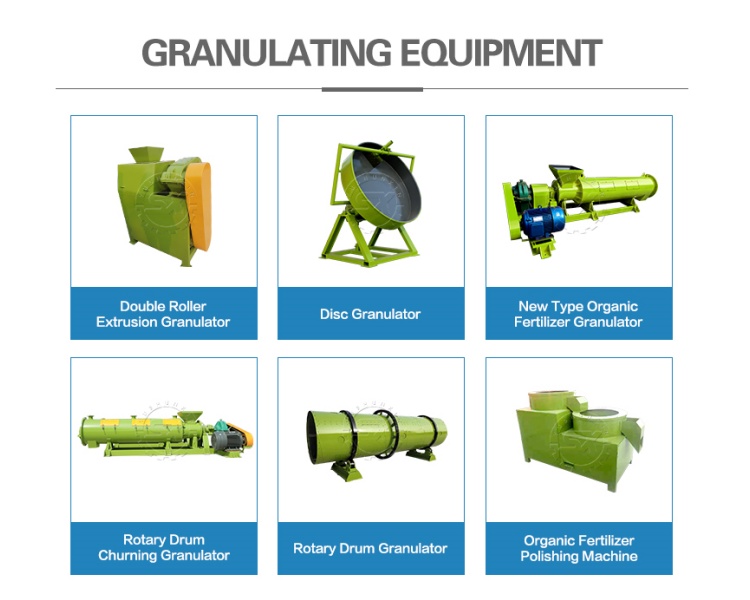Carbon-based fertilizer production from poultry waste has become an important direction in modern organic fertilizer processing. Many producers pay close attention to how to turn chicken manure and other bird dung into stable, nutrient-rich pellets. Pelletizing carbonized chicken manure does not only reduce waste volume but also improves fertilizer efficiency, transport convenience, and long-term storage. During the production process, each stage—from raw material selection to pelletizing—plays a crucial role in determining the quality of the final carbon fertilizer granule. Therefore, a clear understanding of the complete procedure helps producers control costs, improve granulation performance, and achieve sustainable carbon fertilizer manufacturing.
What Raw Materials Are Suitable for Carbon-Based Fertilizer Production from Poultry Waste?
The raw materials used in carbon fertilizer production determine the basic nutrient composition and physical properties of the carbon fertilizer pellets. Chicken manure, bird dung, and other poultry waste contain abundant organic matter, nitrogen, phosphorus, and potassium. When carbonized at high temperature, these materials become a carbon-rich powder or powdery char with strong absorption capacity and excellent soil improvement function. To adjust structure and moisture, producers often mix poultry-based char powder with auxiliary materials such as rice husk biochar, straw powder, peat, or powdered crop residues. These additive materials can change the carbon-to-nitrogen ratio and improve pelletizing performance.
In the carbon-based fertilizer manufacturing procedure, the carbonization furnace or carbonization equipment turns dried chicken manure into carbonized powder. A crushing machine (for example, a carbon fertilizer grinder) can then refine the powdery material into smaller particles for better mixing uniformity. Such preparation ensures that the later granulation or pellet making process will produce smooth, dense, and uniform fertilizer pellets.

How Does the Pelletizing Process Transform Carbonized Chicken Waste into Uniform Fertilizer Granules?
After carbonization and crushing, producers carry out the granulation procedure. The pelletizing stage determines the shape, hardness, and density of the final carbon-based fertilizer granules. In this stage, a granulator or pelletizer machine transforms the powdered chicken manure char into spherical or cylindrical pellets. Common pelletizing machines include disc granulators, flat die granulators, double roller extrusion granulators, and drum granulators. Each type of granulator suits different powder moisture levels, binding agents, and production capacities.

In the granulating process, water and a small amount of binder are introduced to help powder particles combine into stronger pellets. The rotating motion of the pelletizer machine continuously agglomerates the powder into uniform particles. When the pellets reach the required strength, the drying machine removes excess moisture, and the screening equipment classifies the pellets by size. Proper control of temperature, rotation speed, and feed rate ensures that every pellet maintains consistent density and nutrient content. Efficient pelletizing not only enhances the nutrient retention of carbon-based fertilizer but also decreases dust loss during transportation and application.
What Supporting Machines Are Necessary for Stable Carbon Fertilizer Production?
The pelletizing line for carbonized chicken manure usually includes several coordinated machines. A compost turner or compost machine handles the initial fermentation of raw chicken dung before drying. The carbonization furnace performs high-temperature treatment to remove harmful organisms and produce carbonized powder. Then, the crushing machine reduces carbonized chunks into fine powder for easier mixing. After that, the granulator performs the pellet making process. The drying machine and cooling system stabilize the physical structure of the pellets, and finally, the packing machine completes the bagging and storage procedure. Each piece of equipment supports the next stage, forming a continuous production line that ensures efficiency and stable product quality.
Conclusion
The entire procedure—from carbonizing chicken manure to granulating carbon fertilizer pellets—requires careful material preparation, machinery selection, and process control. Producers who understand the function of each stage can build stable, continuous production lines that maximize resource utilization and reduce environmental impact. By combining carbonization technology, powder processing, and pelletizing machinery, the production system can turn poultry waste into high-value carbon-based fertilizer products with uniform granules and strong market competitiveness.
In the current fertilizer industry, equipment quality directly influences carbon fertilizer output and stability. A professional fertilizer equipment manufacturer—Yushunxin—offers complete solutions, including carbonization furnaces, fertilizer grinders, granulators, dryers, and packaging machines, helping producers enhance the pelletizing performance of carbonized poultry waste and achieve efficient carbon-based fertilizer production. You can visit: https://www.charbasedfertilizermachine.com/product/chicken-dung-and-biochar-as-fertilizer/